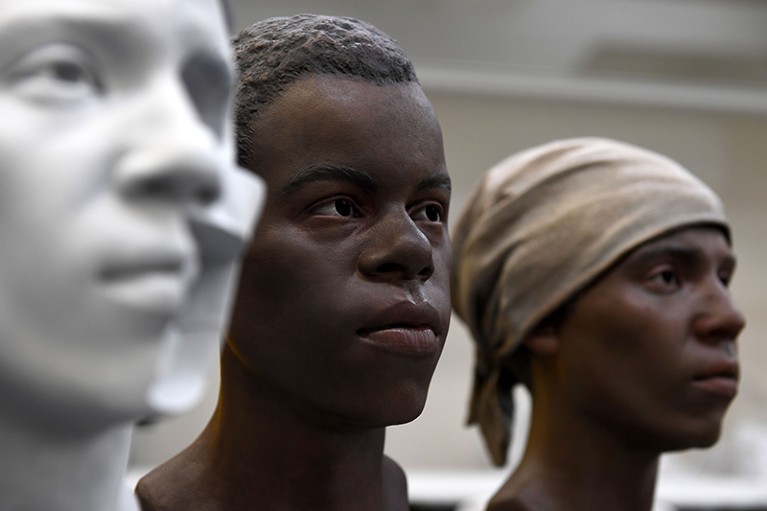Ancient DNA reveals the living descendants of enslaved people through 23andMe [View all]
NEWS
03 August 2023
A landmark genomic study raises the possibility that many more people could find links to distant ancestors through genetic analysis.
Ewen Callaway

Facial reconstructions based on the excavated remains of enslaved African Americans who worked at the Catoctin Furnace iron forge in Maryland in the late 1700s or early 1800s.Getty/Washington Post
Starting in the 1770s, hundreds of enslaved and free African Americans lived and worked at an industrial iron forge in Maryland. Dozens died at the Catoctin Furnace, their remains and lives largely forgotten until 1979 when part of the site was excavated to make way for a highway.
Now, in a landmark study, researchers have analysed DNA from more than two dozen people who were buried at the Catoctin Furnace and used that information to identify tens of thousands of living descendants whose data were in a consumer genetics database.
The study1, published on 3 August in Science, could open the floodgates to linking the genomes of historical people to their present-day descendants — some direct, but most very distant. This approach could be especially resonant for African Americans and other populations around the world who trace some of their ancestry to enslaved people, say researchers.
“Each time we are able to find an enslaved ancestor, we are defeating the purpose of slavery. The purpose of slavery was to rob us of that information,” says Henry Louis Gates Jr, a scholar of African and African American studies at Harvard University in Cambridge, Massachusetts, who was part of the effort. “This is a major development in the history of the use of genetics to trace ancestry.”
More:
https://www.nature.com/articles/d41586-023-02478-9
